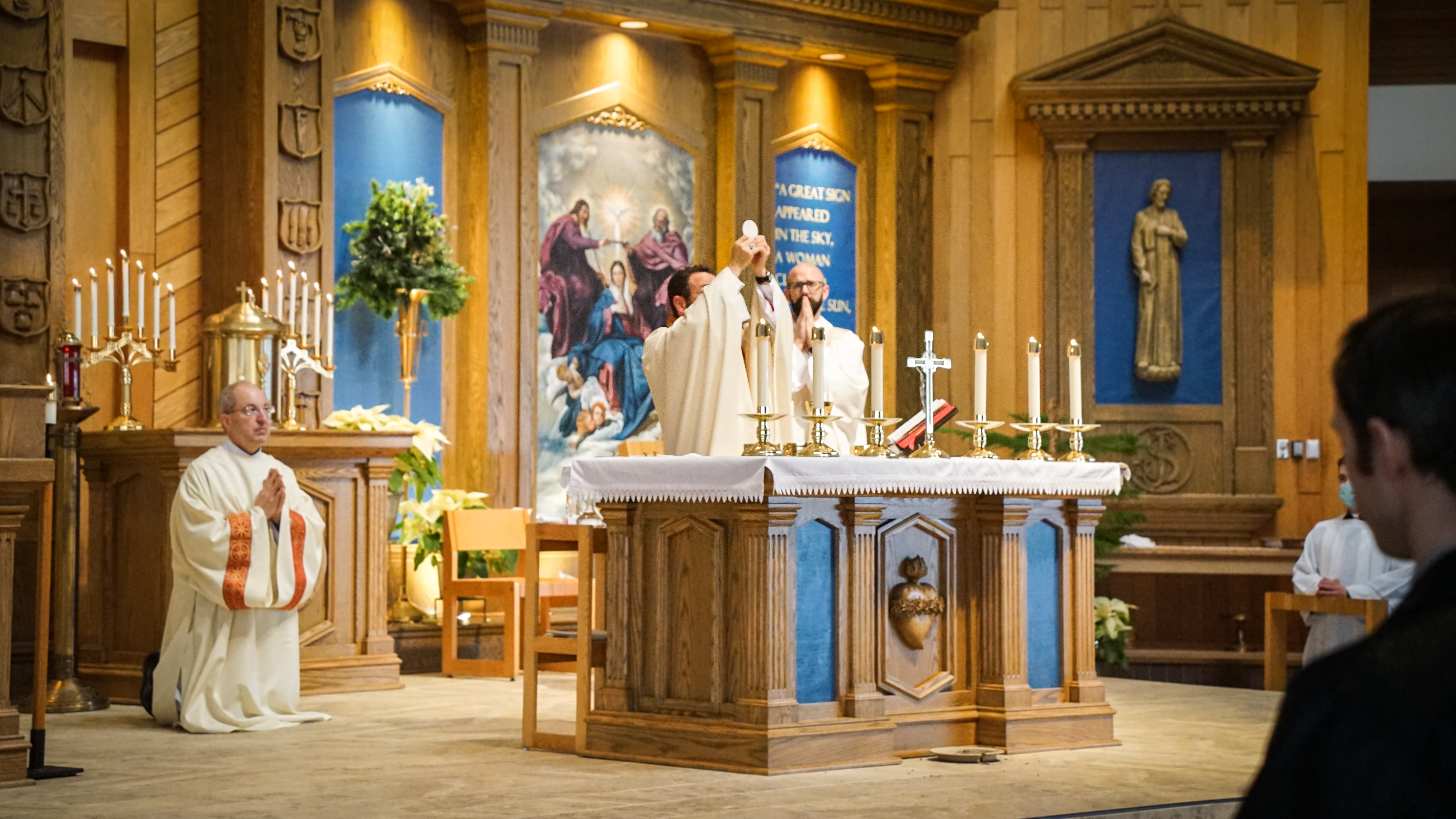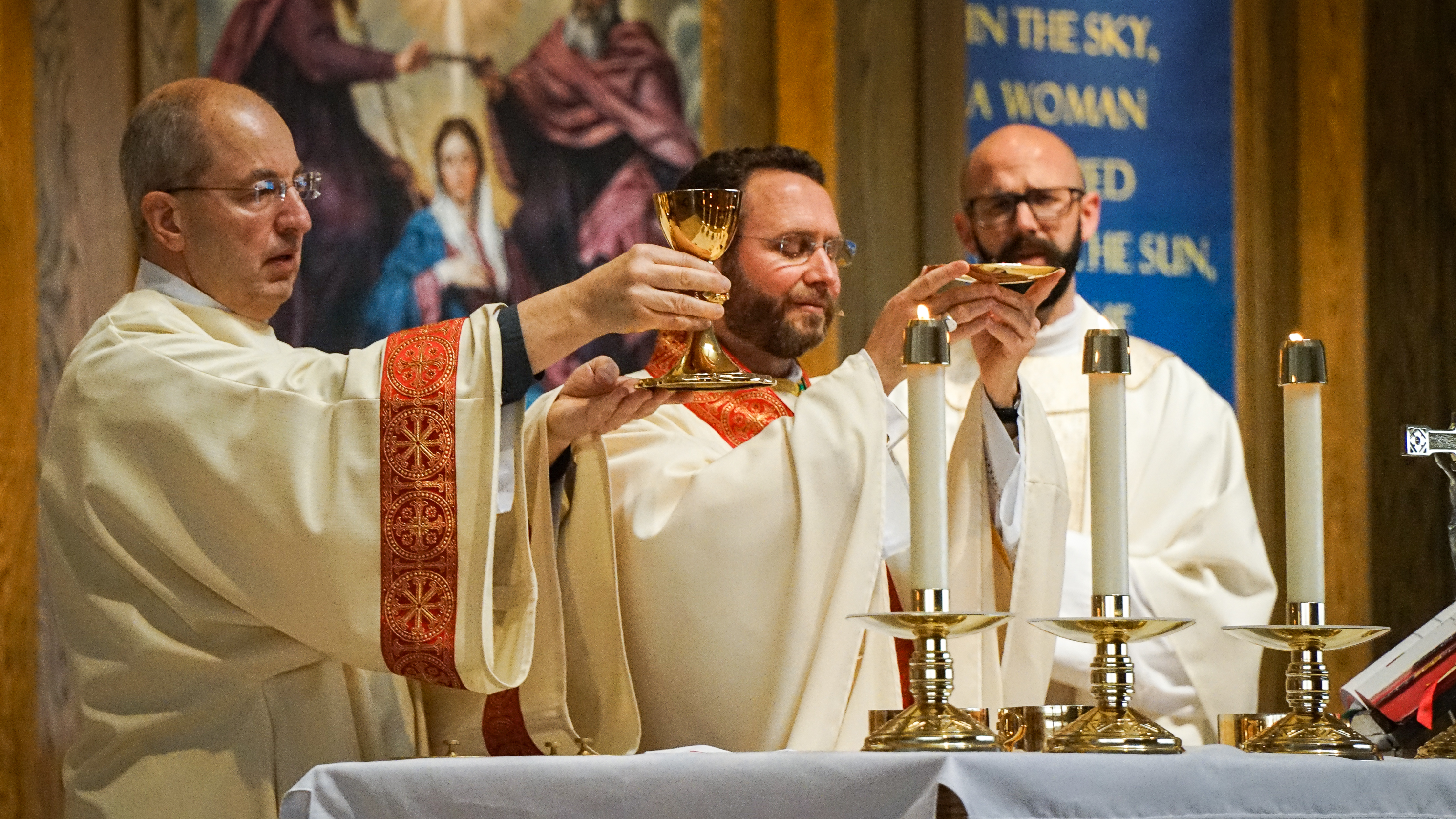The Dedication of a New Altar
Our new altar, in the new style of our Sanctuary Renovation, was dedicated at Mass with Bishop Andrew Cozzens on Sunday, January 31, 2021 (The 4th Sunday in Ordinary Time).
The Dedication Mass is still posted on our YouTube page, and the worship aid can be viewed here as well. Due to the ritual primacy of an altar, there are many beautiful and symbolic rituals involved in dedicating and consecrating a new altar. You can find descriptions and pictures of these rituals below:
Sprinkling Rite:
The first unusual aspect of the Dedication Mass is that the normal Penitential Act (e.g. "I confess to Almighty God, and to you, my brothers and sisters...") is replaced by a Sprinkling Rite. This is also done at the Easter Vigil and frequently throughout the Easter Season as a reminder of God's mercy for us, and also as an important reminder of our own baptism. Through our baptism, we became sons and daughters of God, and we are all called to gather around the Altar of our Lord. Bishop Cozzens sprinkled both the congregation and the new altar with holy water.
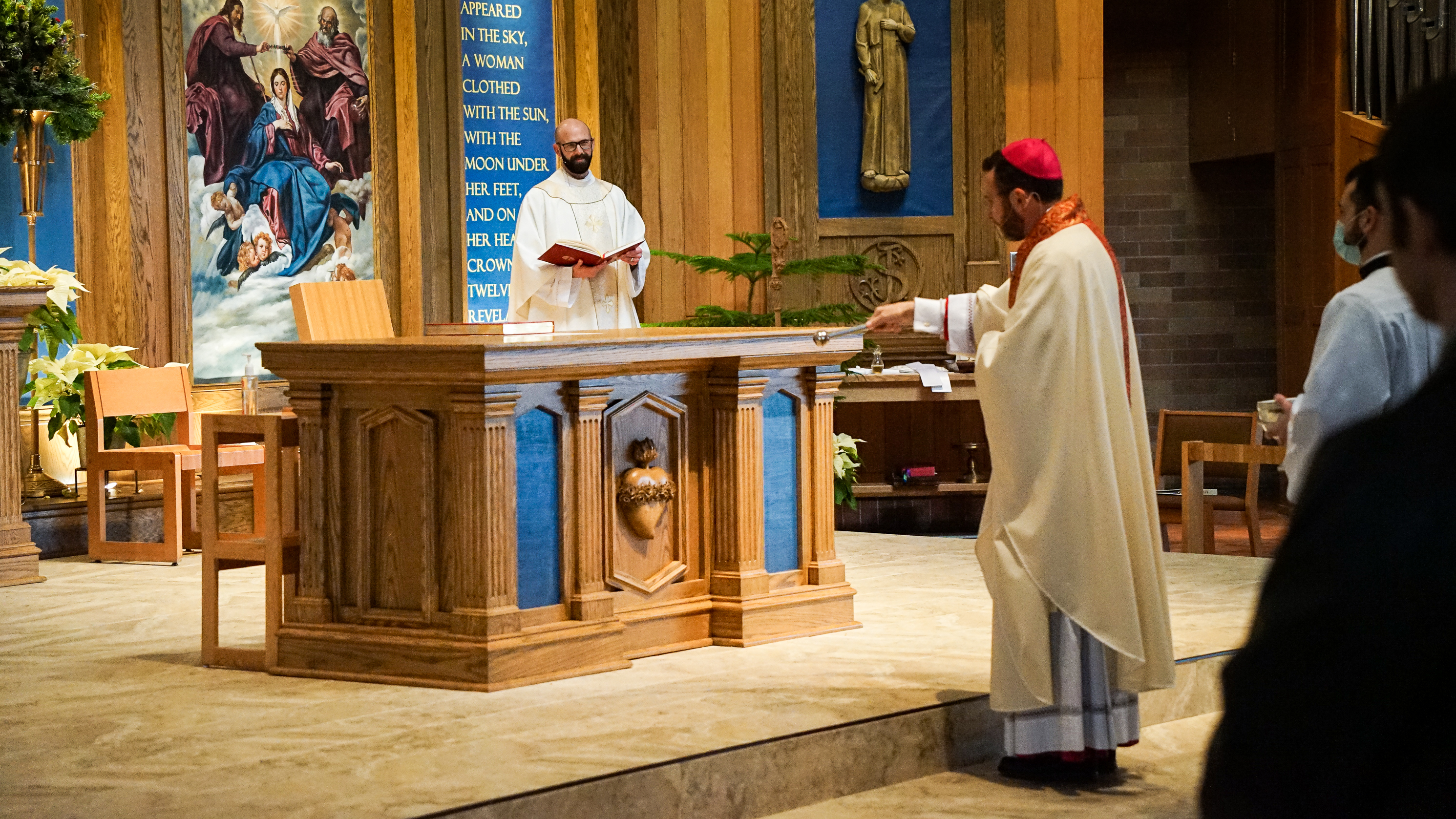
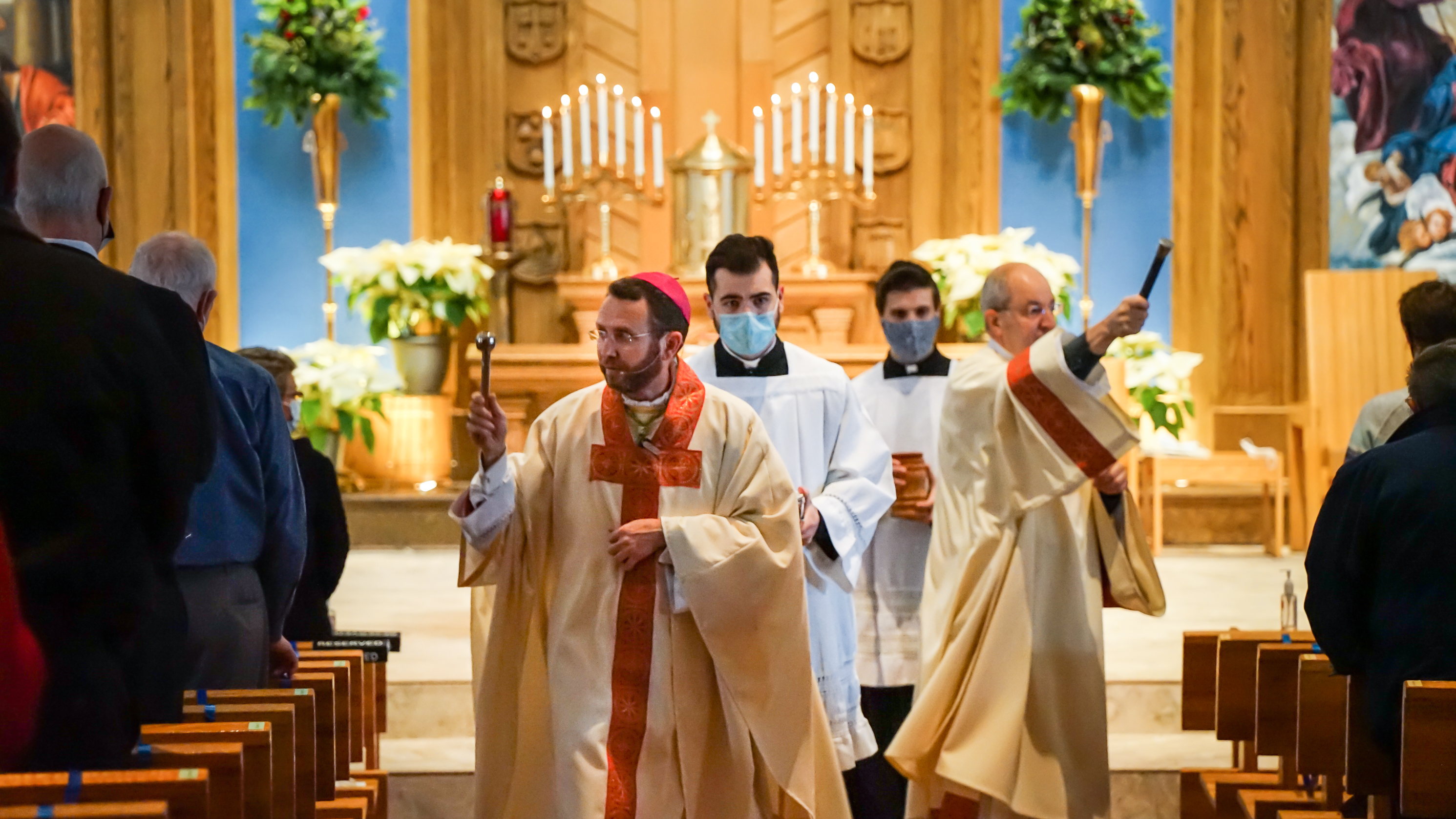
Readings and Proper Chants:
While there are many options in the Lectionary of readings specifically for a Dedication Mass, we decided to exercise the option to keep the Sunday readings of the day. However, the Entrance, Offertory, and Communion proper chants are specific to the Dedication Mass, and this is reflected in the fact that there are different hymns for this Mass. Additionally, there are specific chants for the different parts of blessing and dedicating the Altar later in the Mass.
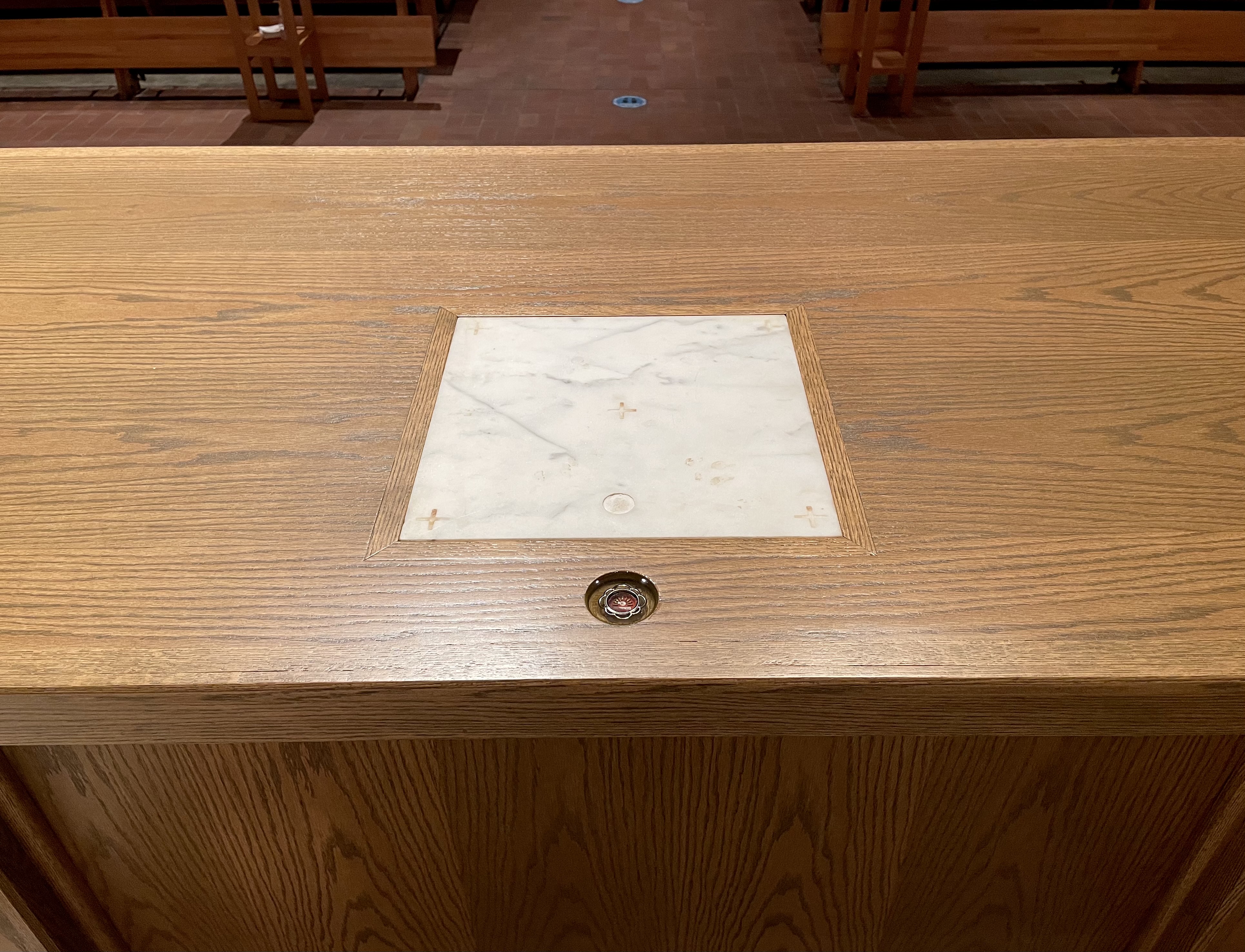

The Litany of the Saints:
While at a normal Mass, the Prayer of the Faithful/Universal Prayer would conclude the Liturgy of the Word, at a Dedication Mass, we intercede in a very special way by praying the Litany of the Saints. Just like the Sprinkling Rite, this is another powerful tradition in common with the renewal of the Easter Vigil and a reminder of our unity not just with one another, but with all those saints and martyrs who are members of the Mystical Body of Christ alongside us. We call down the saints in particular for the Dedication of an Altar because from the very beginnings of the Church, the Mass was prayed on the tombs of the saints. From these ancient traditions, the Church has continued to honor this practice by placing relics of saints in Catholic altars. Our new altar contains the altar stone from the original altar in the old basement church, as well as a relic of Saint Anne, mother of the Blessed Virgin Mary. She is therefore a highly appropriate saint for an altar in a church dedicated to the Nativity of the Blessed Virgin Mary!
The Litany is modified to include the titular saint (in our case, Mary, Mother of God is always the first saint invoked in the Litany), as well as the saint of the place/diocese (Saint Paul and Saint John Vianney, who are also always invoked), and finally, any saints whose relics are placed in the altar (Saint Anne). There are also special invocations and intercessions in the second part of the Litany that specifically speak to the Paschal Mystery of Christ (that will take place on the altar), as well as asking for God's blessing on the Pope, the Church, our community, and the altar itself.
Prayer of Dedication:
The prayer that the Bishop prays over the altar goes back through salvation history to the prophets of the Old Testament and reveals the fulfillment of the old in the New Covenant with Christ. We hear of Noah, who followed the commands of the Lord, and when the waters of the flood fell, built an altar of thanksgiving to the Lord. We then hear of Abraham, who in his willingness to sacrifice his only beloved Son to the Lord, prefigured God's sacrifice of HIS own beloved Son for the redemption of all mankind. We then hear of Moses, who was called to sacrifice the blood of the Lamb for the freedom of his people from slavery, just as the blood of Jesus, the Lamb of God, is spilled for our eternal freedom from the slavery to sin and death.
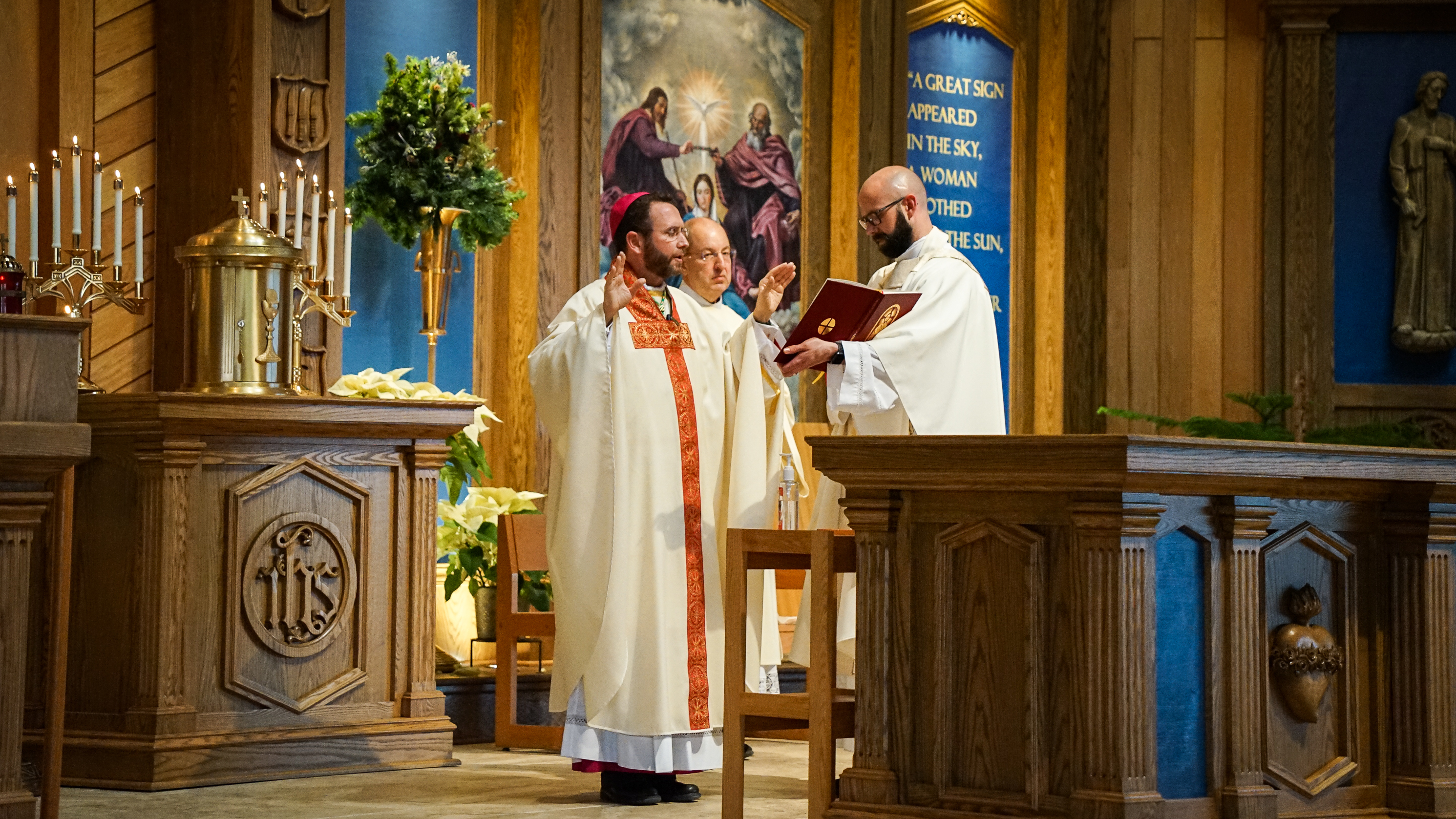
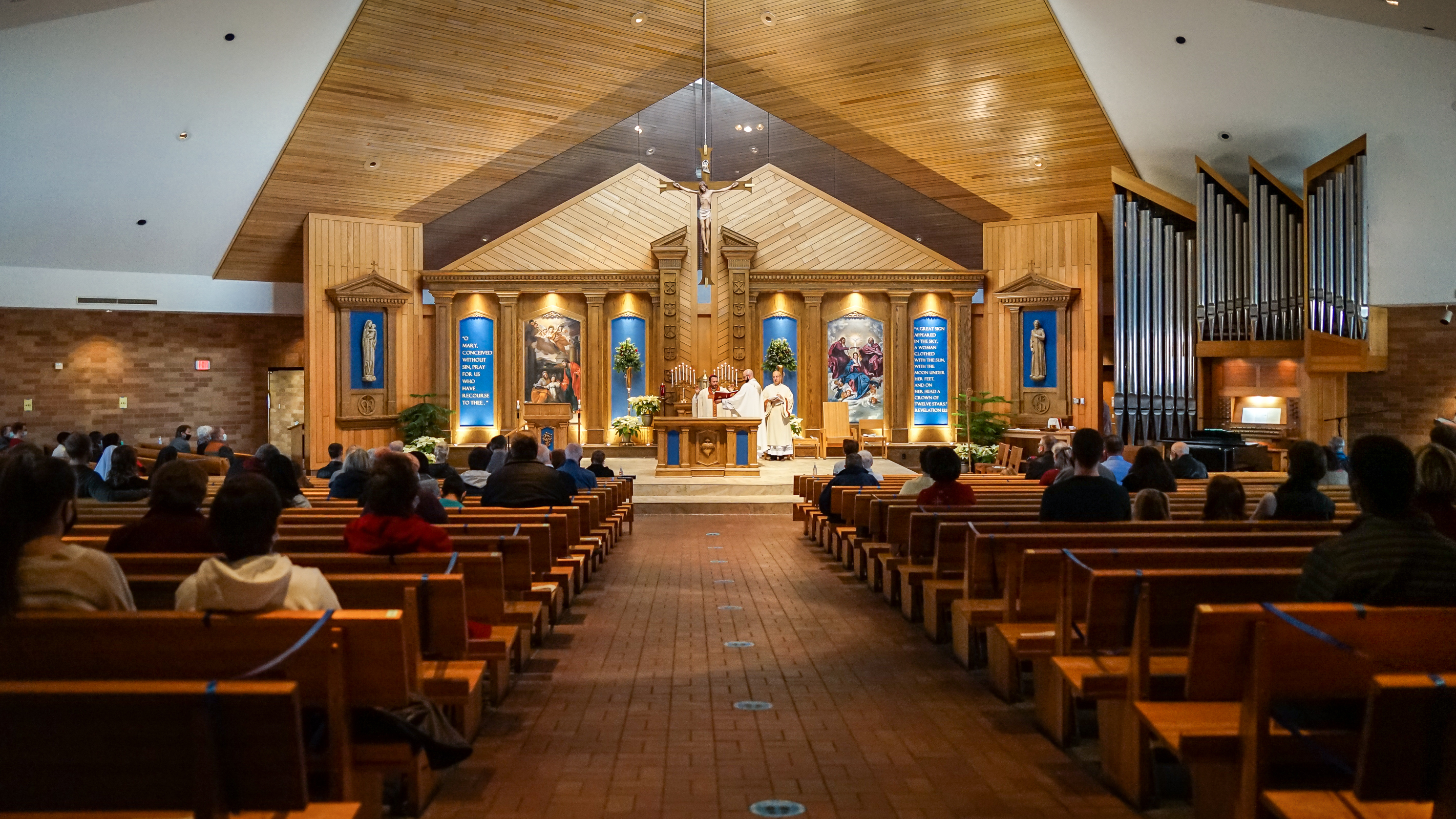
Anointing of the Altar:
The anointing of the altar with chrism makes the altar a symbol of Christ, who, before all others, is and is called “The Anointed One”; for the Father anointed him with the Holy Spirit and constituted him the High Priest so that on the altar of his body he might offer the sacrifice of his life for the salvation of all. As the altar is being anointed with chrism, the antiphon "God, your God, has anointed you with the oil of gladness." is chanted with verses from Psalm 45. Bishop Cozzens first poured the sacred chrism in the center of the altar (over the relics) and then poured crosses on all four corners of the altar, and then rubbed the chrism in across the entire surface.

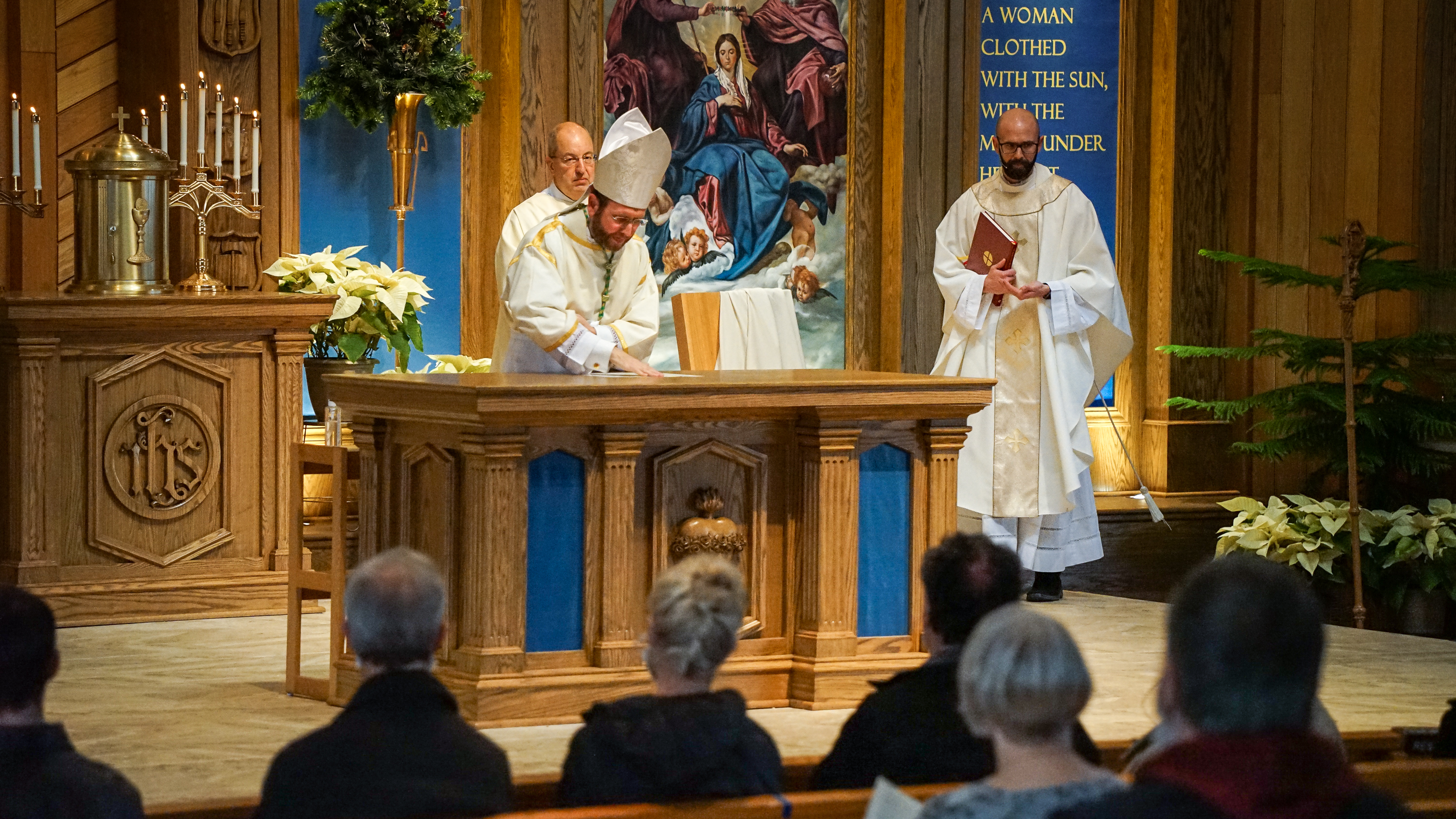
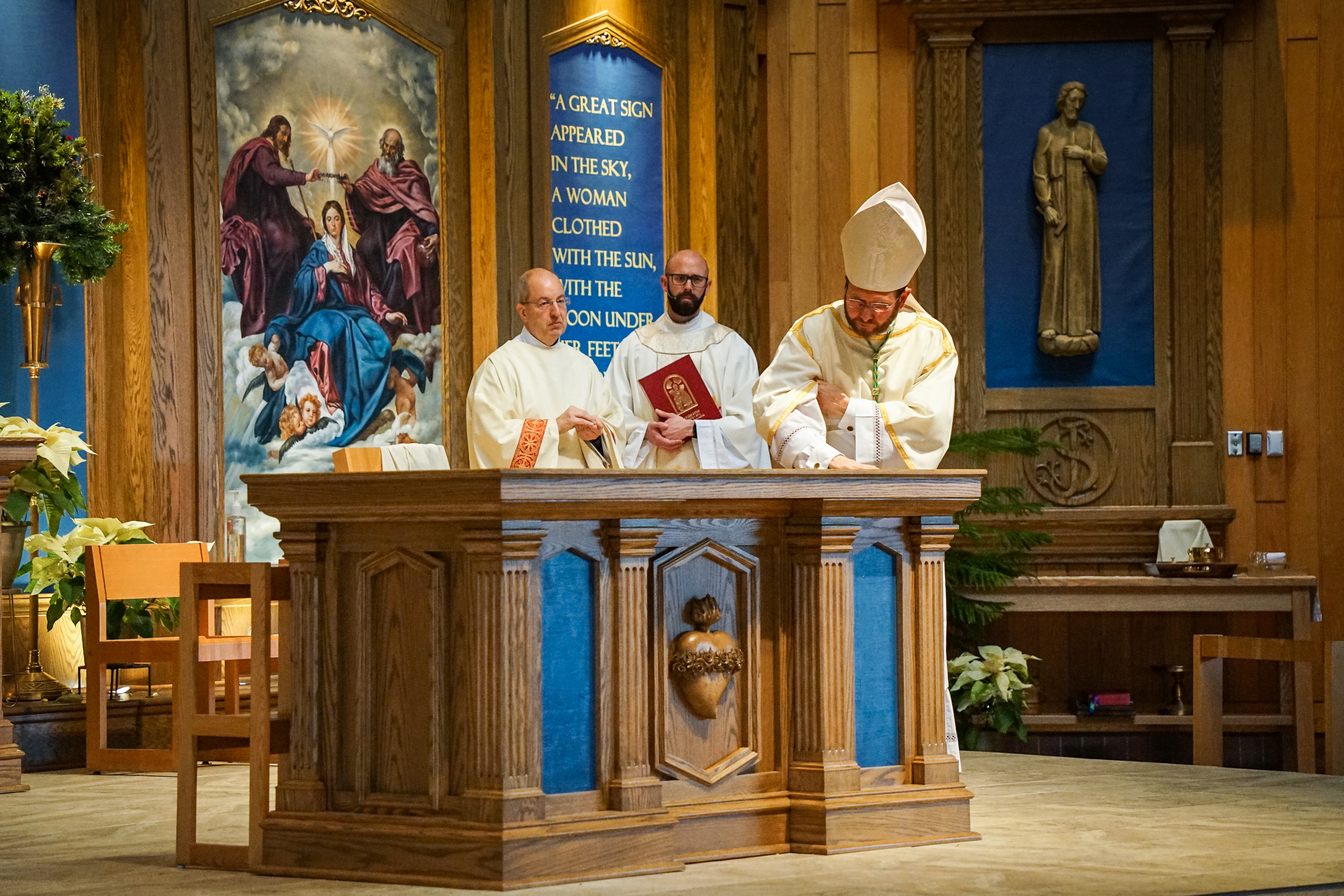

Incensation of the Altar:
Incense is burned on the altar to signify that Christ’s sacrifice, there perpetuated in mystery, ascends to God as an odor of sweetness, and also to signify that the people’s prayers rise up pleasing and acceptable, reaching the throne of God. As the altar and the people are incensed, the antiphon "From the hand of the angel, clouds of incense rose in the presence of the Lord." is chanted with verses from Psalm 138.
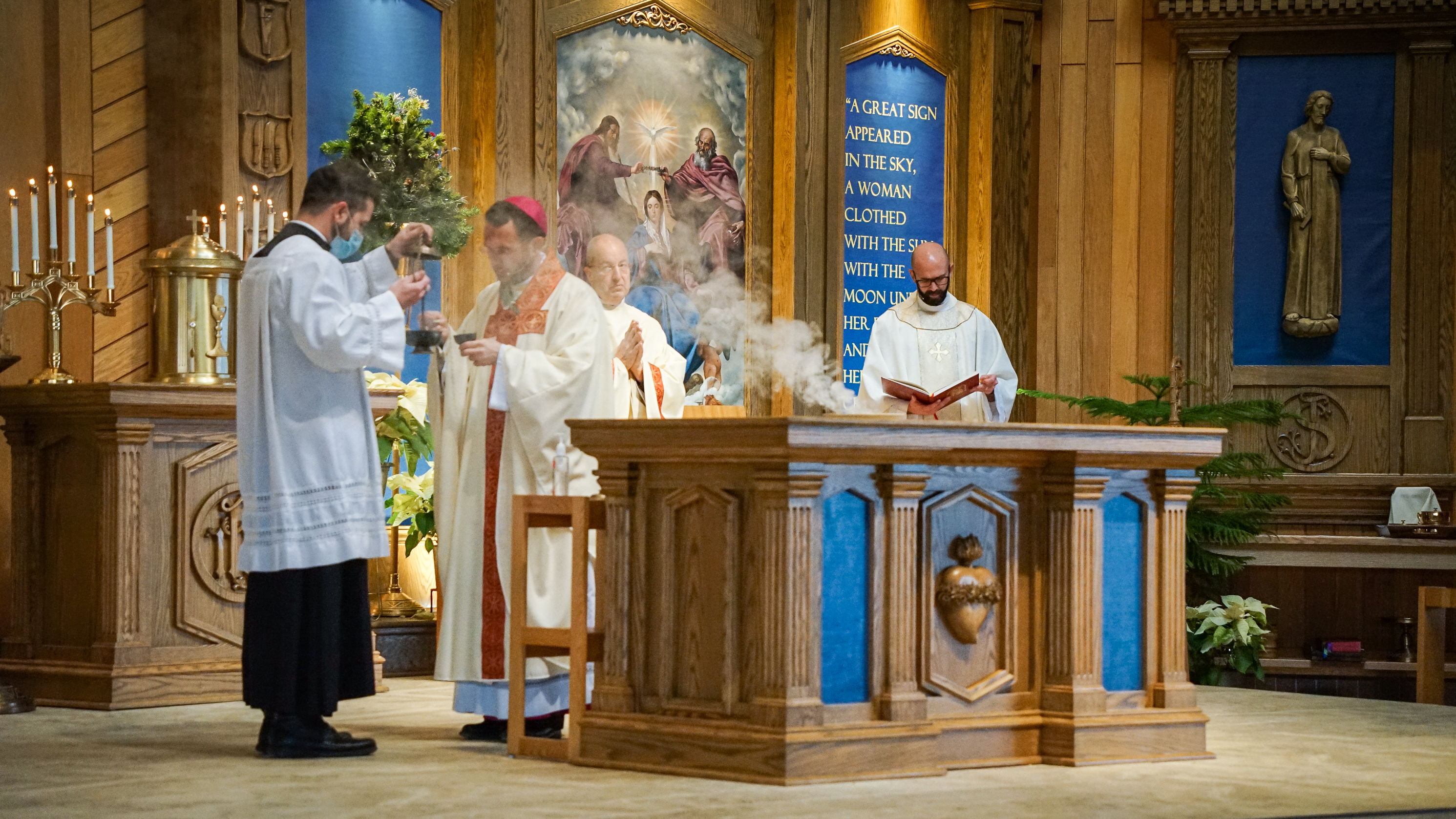
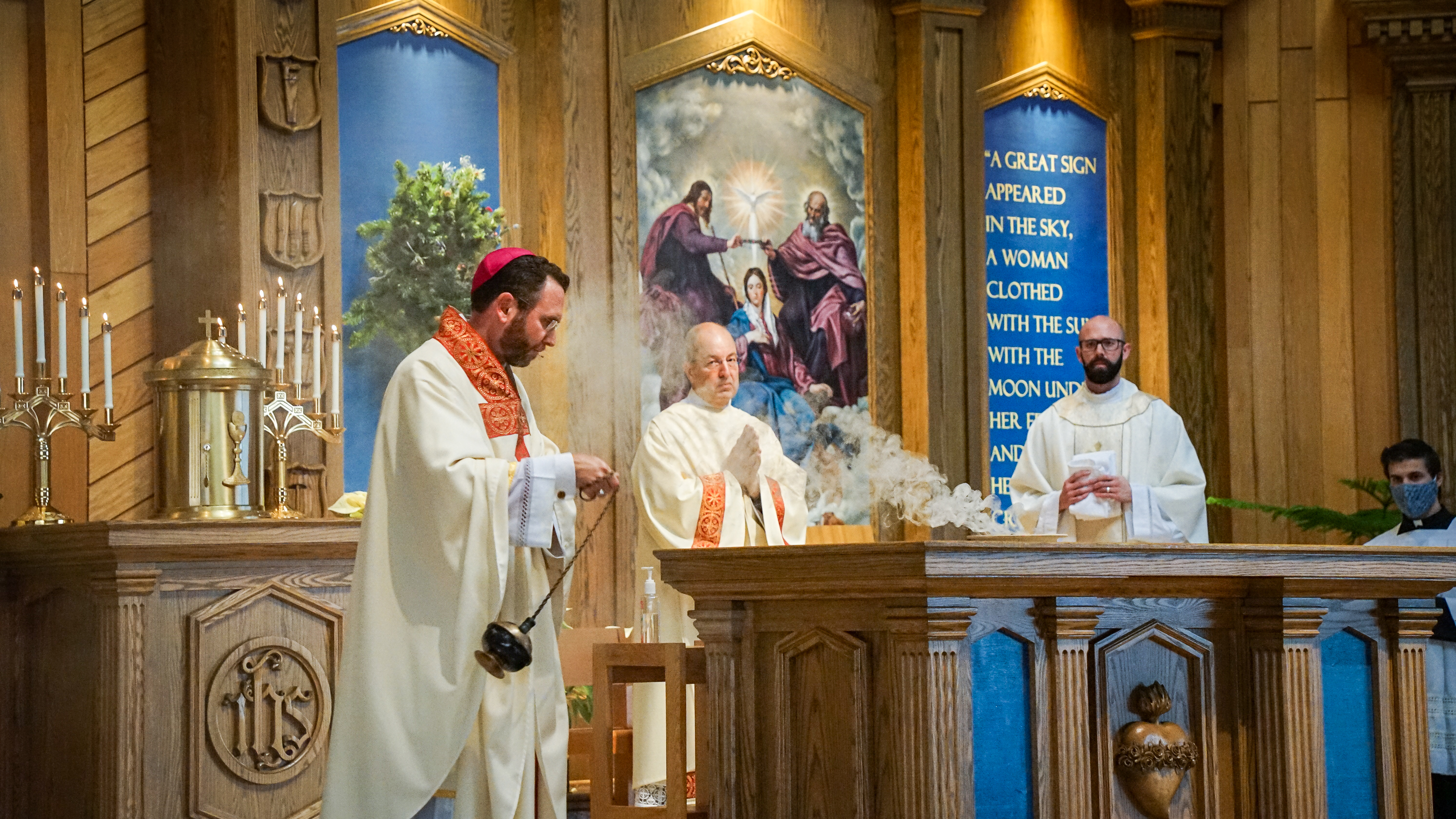

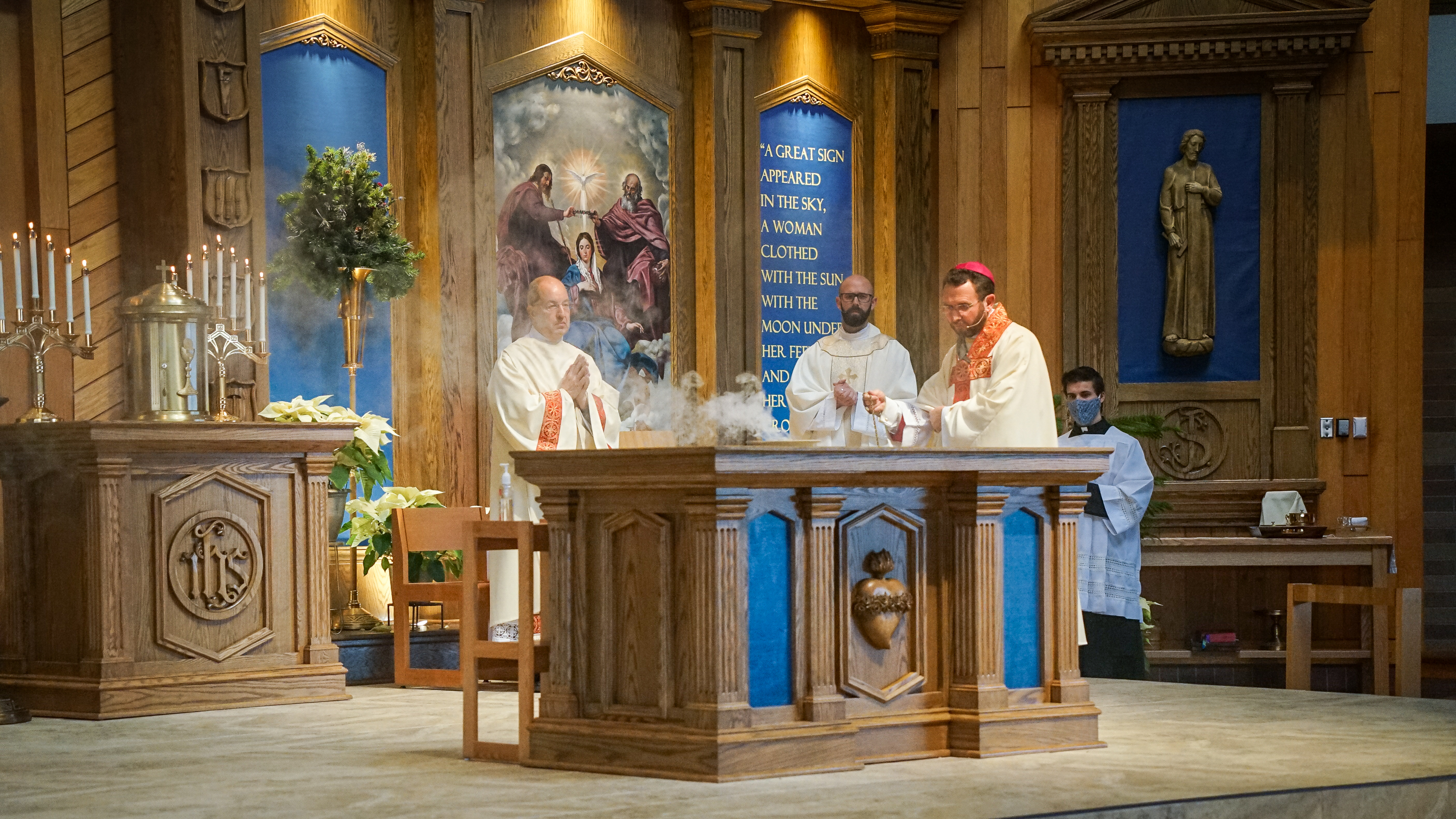
Covering of the Altar:
The covering of the altar indicates that the Christian altar is the altar of the eucharistic sacrifice and the table of the Lord; around it priests and people, by one and the same rite but with a difference of function, celebrate the memorial of Christ’s death and resurrection and partake of his supper. For this reason the altar is prepared as the table of the sacrificial banquet and adorned as for a feast. Thus the dressing of the altar clearly signifies that it is the Lord’s table at which all God’s people joyously meet to be refreshed with divine food, namely, the body and blood of Christ sacrificed.
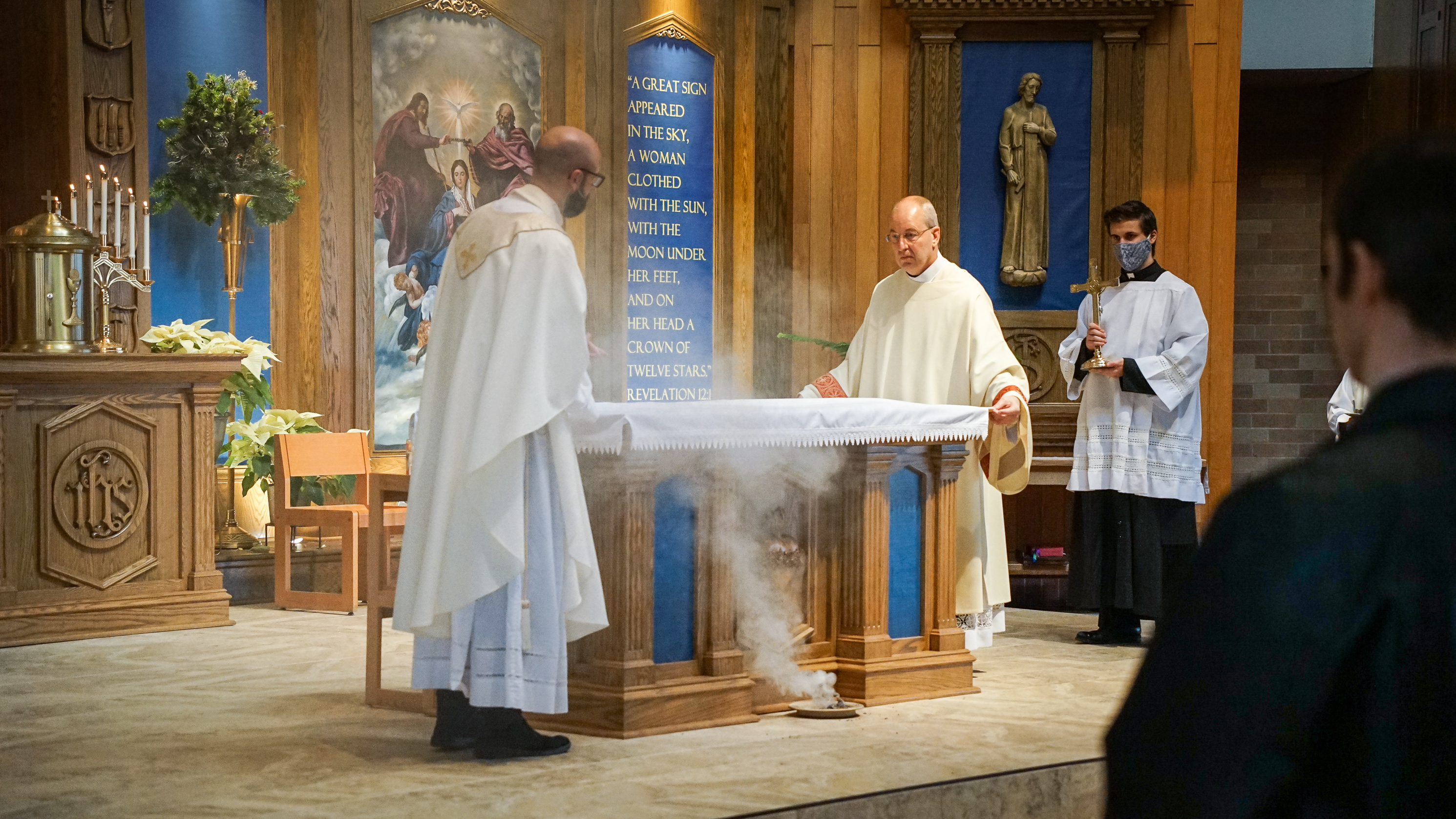
Lighting of the Altar:
The lighting of the altar teaches us that Christ is “a light to enlighten the nations”; his brightness shines out in the Church and through it the whole human family. As the candles are being lit, the antiphon "In you, O Lord, is the fountain of life; in your light we shall see light." is chanted.
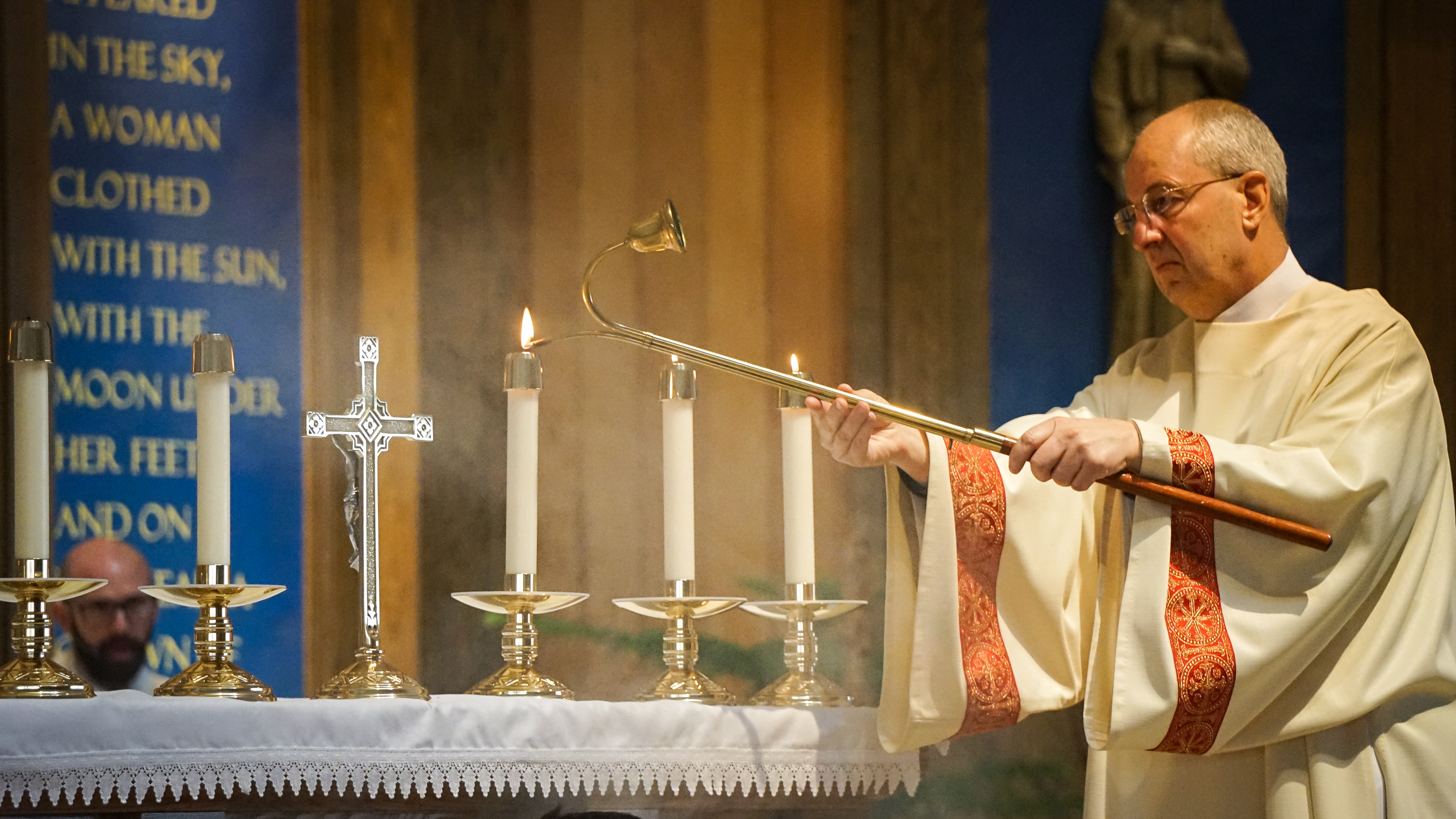
The Preparation of the Altar and the Gifts and the Liturgy of the Eucharist:
After the altar has been prepared, the bishop celebrates the eucharist, the principal and the most ancient part of the whole rite, because the celebration of the eucharist is in the closest harmony with the rite of the dedication of an altar:
- For the celebration of the eucharistic sacrifice achieves the end for which the altar was erected and expresses this end by particularly clear signs.
- Furthermore, the eucharist, which sanctifies the hearts of those who receive it, in a sense consecrates the altar, as the ancient Fathers of the Church often assert: “This altar should be an object of awe: by nature it is stone, but it is made holy when it receives the body of Christ.”
- Finally, the bond closely connecting the dedication of an altar with the celebration of the eucharist is likewise evident from the fact that the Mass for the dedication has its own preface [prayer before the “Holy Holy”] which is a central part of the rite itself.
